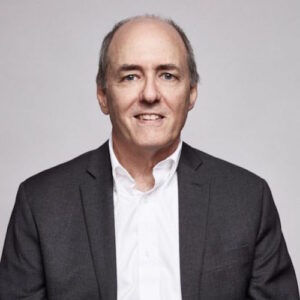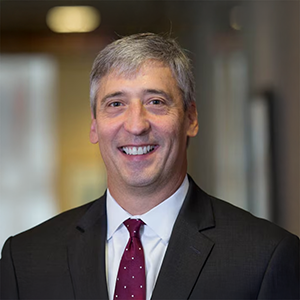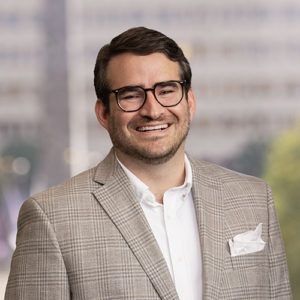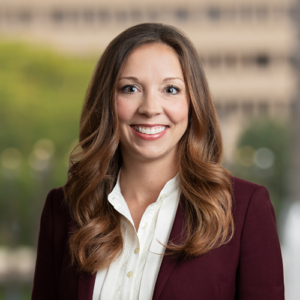Health Care Workforce Housing: Strategies and Solutions
Health Care Workforce Housing: Strategies and Solutions
Health care is not immune from housing challenges facing working individuals and families nationwide. The strain directly impacts employee recruitment, retention and the overall health and well-being of health care employees. Hospitals and health systems are not only re-thinking health care’s role in workforce housing, but increasingly taking action to improve housing conditions and availability for employees and caregivers.
In this episode, Hall Render attorney Danielle Bergner explores the intersection of health care and workforce housing, sharing specific strategies and actionable solutions. She is joined by Milton Pratt, Executive Vice President of Development for The Michaels Organization, a national mission-driven housing developer currently working with health care systems on workforce housing solutions. Mr. Pratt discusses his organization’s innovative, tailored and multi-faceted approach to delivering workforce housing for America’s essential workforce, including health care.
Podcast Participants

Danielle Bergner
Attorney, Hall Render

Milton Pratt
EVP, Development, The Michaels Organization
Danielle Bergner: Welcome everybody. Thank you for taking time out of your day to join us for this very interesting conversation about housing, specifically workforce housing for healthcare employees. I’m Danielle Berger. I think we’ll maybe just start with a brief overview of where we’re going to go today. First, just we’ll take a couple of minutes to introduce both myself and Mr. Pratt. We’ll then switch to just giving a little bit of context to why we’re talking about housing in the context of the healthcare industry, and then we’ll dive right into a solution-based housing strategy and some very specific recommendations for healthcare organizations that are considering advancing a housing project to serve either employees or academic medical center needs. We have a lot of Hull Render clients joining us today. So for those that are not familiar with Hall Render, we are among the country’s largest single specialty law firms. We offer comprehensive legal and advisory services exclusively to the healthcare industry.
We specialize in most facets of healthcare law and the business of healthcare in general. I’m a little bit of a unique animal here at Hall Render. I joined Hall Render about four years ago. My career spans about 20 years, all in commercial real estate. I now work exclusively in the healthcare industry, but before joining Hull Render, I did a lot of housing work, and so one of my roles here at Hull Render is to help bridge that gap between housing and healthcare, really speaking both languages, if you will, trying to help our healthcare clients put together solutions specifically for workforce housing needs. I’m joined today by Milton Pratt, who Lauren introduced as the executive vice president at the Michael’s organization. Milton, maybe you could share a little bit about yourself and the Michaels organization for our listeners today.
Milton Pratt: Sure. One, thanks for having me on the webinar. We’re really excited to talk about this important topic. I’m Mil Pratt, executive vice president. Michaels a little bit about Michaels, I always like to say, I’ll give you the elevator pitch. Michaels is a national developer of affordable, attainable student military and market rate housing. We operate in about 39. We operate in 39 states. We have about 600 plus communities. We also are very active in Puerto Rico, the Virgin Islands and Hawaii. So we’re spread out all across the country and we’ve got most importantly, about 200,000 residents that we take care of each and every day. So that’s a big responsibility for us as an organization and our 3000 employees are spread out across this great nation helping to live lives. We also are a company that believes in giving back. We’ve given out a number of scholarships over the years to many of our residents, so we’re excited to talk about this new platform, this new housing crisis that we see across the country.
Danielle Bergner: Thank you, Milton. So I always like to start a housing discussion to a healthcare audience with just a very little bit of context, housing challenges. Our country faces are complex, they are market specific, so it really is important to understand the market you’re in. But just taking a step back, really big picture for our healthcare audience. The issue has been defined by the A HA, the American Hospital Association as a national emergency. They have defined it this way in a letter to Congress. It is a material barrier for advancing hospital strategy. And so in really very recent years, it’s emerged as a very important business issue for our healthcare clients. The challenge that I see with a lot of our healthcare clients is they’re just not really sure what to do with it. They see the problem, they feel the problem, but healthcare organizations are in the business of healthcare.
They’re not in the business of housing, and I typically advocate that they shouldn’t be. That’s not what healthcare organizations are built to do. And so how do we go from all of these headlines and financial and operational difficulties that our healthcare clients are seeing to real solutions? For those of you who maybe have joined some of my webinars in the past, I have several other webinars on our website that talk about a spectrum of potential solutions for healthcare organizations. Just to set the stage a little bit for this discussion, we’re really going to laser focus on the development solution. So creating new housing units for healthcare workers. That’s really the sole focus of today’s discussion. I personally would tell you that I’m seeing more and more healthcare organizations going down this road after having unsuccessfully tried to solve the solution without doing it this way.
So after several years now of really spinning a lot of wheels and trying to get creative with alternative solutions, I’m seeing more and more clients turn to developer partners like Michael’s to help put together meaningful solutions that are really going to move the needle for employees and caregivers. So with that said, let’s shift right into it here, Milton. I want to talk about one of your initial observations about a housing project in the context of a healthcare organization. And one of the things we talked about that really struck me was your sentiment around the project having a champion. Can you talk a little bit about that?
Milton Pratt: Yeah. Every project that we work on really has to have a champion within the healthcare organization because why are they even deciding to do housing? It’s because every time I talk to a healthcare CEO, he or she says, we have a crisis. We have a recruitment and retention challenge. We want to recruit the best and the brightest to work for our organization and we want them to stay with us for many, many years. Doesn’t matter if it’s a young physical therapist or it’s a resident doctor. They want to recruit the best and the brightest. And most of the time when I talk to the CEO or the head of human resources, they’re the ones that are the champions because the head of human resources is the one that conducts the exit interviews and she talks with a physical therapist that is leaving the organization and she’ll say, Hey, why are you leaving?
And the answer will be, I can’t find a place to live that’s affordable, or I can’t find quality housing for me and my family. And so what can these organizations do to stop that flow of people out of their teams? And housing is key. Housing is the number one thing you can do to go from being a three star hospital to a five star hospital. And because hospitals are not in the business of managing residential apartments and financing those apartments, the best solution really is to turn to a developer partner like Michael’s to help you through that, help you educate yourself on the opportunities that exist for how you finance a deal like this or how you manage it or how you even continue to own it long term.
Danielle Bergner: Yeah, I totally agree, and I really don’t think this can be stressed enough. Having worked with a number of our healthcare organizations on this issue, if housing for employees and for I would also say graduate medical students is not made a priority at the highest level of the organization is going to be very difficult to make progress. It’s out of the box. It really needs a high priority put on it by somebody in the highest level of the organization, and that really is where it starts. The projects that I’ve seen go from zero to placed in service, successful, everyone’s happy. What’s behind that and where it all started was a strong executive commitment to meeting the housing needs of their workforce.
Milton Pratt: And one other thing, every organization has different goals. Sometimes an organization’s goal is to create housing for just their employees. Sometimes it’s to create housing for their employees and people that live around the neighborhood to maybe stabilize the area surrounding the institution. So one of the things as a developer we like to do is we like to listen, listen again, and then finally listen a third time and make sure we got it right. We want to know what the goals of the organization is so that we can respond to those goals in the form of a new community that we develop in partnership with them.
Danielle Bergner: That’s great advice. So Milton, in talking about workforce housing with you, I liked how you framed your approach, your firm’s approach to the three pillars of workforce housing. So maybe I’ll start with just a little bit of background before we get into all of the pillars, but one of the questions, I mean I don’t think you have to look very far in LinkedIn feeds and headlines to know that workforce housing is a crisis around the country, not just for healthcare but for all workers. And I always say one of the reasons I’ve always enjoyed working in and around housing is for the most part, housing problems are solvable with money. And I always say, if that’s the only obstacle to solving a problem, I like our chances because a little creativity can go a long way. You kind of talked a little bit about your three pillars for how to solve those financial gaps that exist in workforce housing.
The market has a difficulty putting this product in service because frankly just the cost, right? The cost of building new construction is not going down. The cost of labor is not going down. Interest rates, I mean they’re inching a little bit, but not much. I think most people in this industry have accepted that we have a structural housing deficit. We have a structural problem with housing finance, and I really am intrigued by your company’s approach specific to workforce housing and how to tackle some of these issues. So maybe could you talk us through your three pillars?
Milton Pratt: Sure. First, the most important thing that we like to stress is we like to go into these developments assuming that we’re not going to take any form of subsidy like low-income housing tax credits or section eight, that’s the basis of this because we want to make sure that the goals of the hospital are being met. And the only way to do that is to, one, ensure that we get a project put together that’s financially feasible. And the three pillars are pretty simple things when you think about it, but you have to learn how to put ’em together in order to make a deal financially feasible. It starts with low cost land. That is probably the single most important thing a hospital institution can provide is land. Now every hospital doesn’t have land. Some hospitals decide to go out and buy land so that they can undertake a project like this, have one housing partner we’re working with if they have a hospital that they decided that it was no longer meeting their needs.
They built a brand new facility a mile or two away, and they realized they’ve got this large building with all this infrastructure in it that’s costing them money to maintain a few million dollars a year to maintain. And when they thought about what they could do with it, it’s not going to turn into another hospital. So they realized from a pitch from us, it could turn into some type of housing to again, help meet one of your specific needs. So low cost land is pillar number one. We also need to get some type of a real estate tax exemption or an abatement or some type of an agreement with the local taxer to ensure that the property operations are not going to be taxed because many hospital systems already have a nonprofit status. They may or may not be paying full taxes anyway. So in some communities, it’s an easy pitch to say, Hey, we’re not going to have a hospital here any longer, but we’re going to have something that is a public benefit.
And that is another part of one of the other pillars is the real estate tax exemption and then of course figuring out how we can get some of our impact fees waived, hookup fees, permit fees. These are small things, but when you add ’em all up together, low cost land, real estate tax relief and some sort of support from the local administration, that’s the basis for a project that is financially feasible. And every one of these transactions that we’re working on, they all look different. They really do. There isn’t a structure as if it were a tax credit project. We have a very well-defined structure. We think we’re uniquely positioned to do communities like this because of our experience both on the market rate side and military side, as well as our core strength in the affordable housing business.
Danielle Bergner:
I think that’s a great transition, Milton, to talk a little bit about your, I’ll call it a famous quote, but I don’t know how many people know it, but every deal is a snowflake. And when we were talking, that really struck a chord with me because it’s very true. It’s driven by what are the organization’s goals, make sure you really understand what they’re trying to achieve with the project. What are the natural assets? Who are the natural stakeholders, and how do you bring that all together to make a project that works? I’d like to spend a little time pulling apart some of these different options, what I’ll call structure options to give our audience a sense of how flexible this really is for those joining us. Maybe without the background and affordable housing. I do want to be clear, we’re not talking about tax credit financed affordable housing, whether it be section eight or section 42 or some other sort of public subsidy program.
We’re trying to make these projects work for workforce housing without using those programs. And I think that that’s a really important distinction because those programs are very inflexible. There’s a formula and a way that those projects have to work and a way that they have to be managed. Workforce housing, the models that we’re talking about in this program are much more flexible and I would say much more capable of being tailored to a healthcare organization, specific needs, specific workforce base, whether it be educational, whether it be staff, and really being able to deliver a product that the healthcare organization knows is going to meet what they’re trying to achieve. Could we talk a little bit about ground lease structure? So we have, what I find with a lot of our healthcare clients is on that topic of low cost land, right? Pillar number one, we often encounter a lot of reluctance to donate or just give away outright land. There may be a variety of reasons for that. A number of our healthcare organizations, many of them actually are religious ministries. There may be religious or ethical directives that would limit their ability to do that. There may be strategic reasons, long-term strategic reasons why they would not want to divest entirely of the land. Can you talk maybe Milton a little bit about how a ground lease helps to mitigate those concerns for a healthcare organization?
Milton Pratt: Sure. So a ground lease structure, we use this a lot in the public private partnerships that we do all across the country, whether it’s with housing authorities or with cities or with universities. And it’s a mechanism that literally, it is just that the partnership, let’s just say that will own the building improvements does enter into a long-term ground lease, 75 years, 50 years, whatever the right term is. So that one, the institution continues to have long-term control over what happens and who lives in this community. That’s one of the fundamental things that we like when we talk to our partners and early on in the engagements, we tell ’em we don’t need to own the land. That’s not a goal of ours. We just need to ensure that the land is provided to the project at low or nominal cost. And so if it’s a religious organization that is prohibited, let’s just say from donating land, they’re not donating the land, they’re investing it into a development and it’ll have a long-term ground lease and in 75 years theoretically they’ll get the land back with the building on top of it
Danielle Bergner: Then. So a master lease structure is a little bit different. So a masterly structure, and tell me if you think about it differently, Milton, but I think of a masterly structure first and foremost as a credit enhancement for the financing of a project. So this is where a healthcare organization would master lease just what it says, a number of residential units, whether it be an entire project, whether it be just a number of units within a project, but that the hospital itself would actually master lease enter into a master lease to secure rental stream for those units. And then those units are subsequently leased to employees through a property management arm, but the master tenant is the hospital or the healthcare organization itself. And so the benefit of that, there’s multiple benefits. So maybe you can talk a little bit about your success using that as a tool.
Milton Pratt: Yeah, so master releases, you’re right, they are a credit enhancement, but the thing to keep in mind is some hospitals may decide that they don’t want to have that obligation. They don’t want to have that long-term obligation to agree to master lease 200 units in this apartment community. And so we could do a development where they only master lease 50% of the units, and then we as a developer would have to ensure that the other 50% are able to be leased to the general public. Or maybe there’s a community benefit arrangement that only people that live in a specific neighborhood or work for specific other maybe partnering employers, stakeholders can live there. But again, because these deals are like snowflakes, we can do whatever we choose to do based on one of the financing that we’re trying to bring to the transaction as well as the goals of the institution, the hospital and the organization.
Danielle Bergner: Right. Another question that we field periodically from healthcare clients is the topic of joint venture ownership of projects. And without maybe getting into all of the stickier legal issues around joint venture housing projects involving healthcare organizations, maybe just talk a little bit about your experience and successes using that as a potential option.
Milton Pratt: Joint ventures normally exist or come about when a hospital says they want to be in the ownership structure so they can enjoy some of the financial benefit and makes sense on some transactions. But oftentimes hospitals don’t want to take on any of the guarantee risk. They don’t want to take on any of the obligation in the event that something bad happens like another covid pandemic and the units don’t get leased up. So joint ventures can be structured, but hospitals are already in the business. That’s tough and many times they don’t want to get in a residential apartment business, and that’s what they would be getting into. And oftentimes the boards don’t want to take on that kind of responsibility as well, but again, we can do it. We’re very flexible about our approach because it’s based on the goals of the universe, rather the goals of the hospital as well as what type of financial investments they want to make.
Danielle Bergner: I agree with that 100%. I think the idea of joint venture ownership always sounds attractive in theory when people think about it. The reality of it though, once you work through the legal and risk management issues, I think are very difficult for hospitals and boards to get their arms around, which is why my advice I would say pretty consistently to healthcare clients is do not try to be a housing developer. Try to find the best possible housing developer you can find to do that because that’s what they do. We did also talk a little bit Milton in our discussion about use of a nonprofit ownership intermediary. This would be where we bring a nonprofit organization into the ownership structure potentially. I mean, one of the upshots of that could be, it could help the tax exemption analysis depending on the jurisdiction that we’re in. It could also potentially open tax exempt bond financing as a potential financing option depending on the scale of the project and the financial assumptions being made in terms of rents and incomes of people living there. Is that a strategy that you’ve seen used in your work? And if so, what are your feelings about that?
Milton Pratt: Yes, that is a strategy that we’ve seen work. Oftentimes the hospital has a foundation and like many universities, they have their foundation. My alma mater, I was on the foundation board, and the foundation board was responsible for developing all of the on campus, but privately financed dormitory. So think of it in that fashion. So a hospital that has the foundation could be in the ownership structure. They could be the entity that owns the land and leases it to the partnership in order to get their real estate tax exemption. All of it comes down to figuring out what’s the most advantageous way to finance the project. And if we discover that because there’s a nonprofit foundation affiliated with the hospital, if they own the ground and the improvements, we can find a way to structure a transaction to make it work with private equity.
Danielle Bergner: Right. Milton, so I have a point here about at risk versus fee for service developer models. I think to me this falls under the heading of every deal is a snowflake. Some developers are not open to fee for service development models. I don’t know what your sentiment is about that, but I think for some hospitals they would rather pay for development services and potentially even own it and not have third party ownership up. Is that a possibility?
Milton Pratt: Absolutely. We can either be an fully at risk developer where we will go in, we will hire the general contractor, hire the architect, the civil engineers, design a community, present it to the hospital organization with their input. They have to be at the table, they have to be at the table in the beginning. We’ll need to conduct focus groups to understand who they expect to live here. We’ll have to figure out what types of amenities and services we need to have at this community because it’s still got to be an attractive community. People still have to want to live here. It’s going to be their home and it might be right across the street from their jobs. So it really needs to be competitive in the marketplace, but we can operate it as an at-risk developer or we can operate as a fee developer where maybe in the instance where the hospital is self-financing it, whether it’s through their foundation or through the hospital directly, and then we could be simply a developer who oversees the development, meaning we could do things like hire the, or we could simply manage the contractor and the architect and the engineer and put together the project.
We also operate as a property manager as well, and that’s one of the things that if I were a hospital, CEO, I would never try to get into the first the real estate residential development business, but the property management business as well because it’s very intensive and you have to have the experience to ensure that you do it well because you have to make sure that people are happy that are going to live in these communities. And so we have don’t have one set model. We can just operate across the spectrum based on the individual needs of the healthcare organization.
Danielle Bergner: I’m really glad you mentioned property management because every residential project that I’ve ever been involved in it succeeds or fails on property management. And property management in my experience is often overlooked. It might be kind of the last thing somebody thinks about. I would argue that property management needs to be on the list of priorities at the outset because it is the day-to-day interface between a hospital’s, the workers who are actually living there and this is their home. And so I always say, do not overlook property management, whether it’s the Michael’s organization or another third party qualified local management firm. There’s options for how you do it, but do not overlook it at the outset. You can design and construct the best project in the world, and if you don’t have property management, right, it can still not work.
Milton Pratt : Correct. One of the things we do, and as I said earlier, we’ve got about 3000 employees, 2,500 of them roughly are involved in the property management business. They’re taking care of our soldiers and sailors or military basis. They’re taking care of our seniors and senior communities. They’re taking care of affordable housing families and they’re taking care of students that are just going off to college for the first time. But we bring our property management team to the table day one. And the reason is because we aren’t just designing a building in a vacuum. We need to know what type of amenities and services, but we also need to know simple things like we need to make sure we use the right type of flooring so that it has long-term benefit. We need to make certain that we’re putting in the right types of closets and doors and furnishings and light fixtures.
And our property management people have the experience. They tell me, milk, do not use this type of a toilet device because it breaks or these type of light fixtures. We’ve had experiences with them over the last 20 years and if they say they’re going to last 10 years, but they only last three years, so they are an integral part of the development, but you have to bring ’em in the beginning. You can certainly farm it out if you choose to, if you’re a university that wants to do that or hospital that wants to do it. But I would tell you bring property management to the table. Your very first meeting with your developer. Ideally you want your developer and your property manager to be one organization like the Michael’s organization, but if that’s not the case, you want to make sure you have that input.
The other thing that’s important is compliance. And it isn’t compliance in the sense of a tax credit compliance or in the form of HUD compliance. It’s compliance to make sure that the right people are getting admitted into the community for leasing and ensuring that, again, it’s meeting the goals of the hospital. I talked to a school district actually that had developed some tax credit developments over the years and they realized initially they had, I don’t know, 80% of their employees living there, but over a long period of time, actually not a long period of time, four or five years, because families move on, people get promotions, people move out that they only had about 25% of the development filled with their current employees. So they were asking themselves, well, why did we do this? That’s not the situation you want to be in. You want to make sure that the property manager, again is admitting the right people leasing to the right families, and your employees are going to tell you one way or the other if they’re happy. And property management is really what makes it happen.
Danielle Bergner: I wholeheartedly agree. Residential property management is a really high touch business. It’s a really human business, and it’s very different than commercial property management. Commercial property management is not quite the high touch that residential is. It’s a lot of people management. It’s just a very, to my point, it’s a different world. So just because an organization has deep knowledge of facilities management does not mean that they are qualified to manage residential housing. It is apples and oranges, and I really could not agree with you more, Mel, when you talk about the need for that partnership upfront. The other reason, to your point, the other reason I like when the developer is also the project manager or the property manager is if you have to design and construct a building that you are then responsible for after it’s delivered, you look at the design and construction of that building a little bit differently
When there is a difference between management and design and construction. I know you’re laughing because you’ve probably seen this many times. I have too. But that disconnect creates, I mean, for a developer who isn’t managing the asset, they’re just not as invested in the long-term operation of the building. And so that would be another reason I would argue, to seek a development firm that is also capable of providing the high level of management that you want for your workforce.
Milton Pratt: I was laughing because of the natural tension between the developer who wants to build this beautiful community for the lowest possible number, and the property manager who wants to have the beautiful communities as well, but they wanted to have the highest possible services, amenities, fixtures, because they’re going to be there for the next 50 years taking care of this community, and they know the things that break. So we listen to them constantly in the beginning. We take feedback from them. We have a full design standard that we’ve applied across all of our companies, all the different housing types. But the information that went into our design standard, it came from real time experience from the property manager. They’re the ones that tell us, do not use carpet in certain types of housing, do not use this type of vinyl flooring. And that information is what we’ve created or what we’ve used to put into our design standards that we apply across the company. And it is critically important to the success of any development.
Danielle Bergner: Agree. So our next slide here is kind of naturally transitioning into what should hospitals and healthcare organizations be looking for? So say you have an organization, they have a champion or multiple champions, they’re ready to go. They know that they cannot do this internally. They know that they need to find a partner. Given your years of experience in development, what do you think of this list? I’ve kind of pulled out four concepts that I would be looking for on behalf of a healthcare client in an RFP process. But as you look at these, the one that I always come to sometimes first is mission match. Because healthcare organizations in many cases, not in all cases, but in many cases are nonprofit mission-based organizations themselves, they care deeply about their workforce, their caregivers. They want to make sure that they do right by them in undertaking a project like this. And I tell our healthcare clients just this is so important to have mission because every project has its ups and downs, right? You have to have a high level of trust in who you’ve selected. I would always advocate for asking for referrals, but on these other items, I’m curious, when you look at this list, what kind of jumps out at you?
Milton Pratt: Yeah, this is a great list. Let me start by saying these partnerships that we create, they are like marriages and that the housing are like the kids. That’s a great analogy. I think you want to find a partner that has experience both in the market rate sector as well as the affordable, because we call it workforce housing, but at Michael’s we like to call it attainable housing. And so we want to be a thought leader in this industry, this attainable housing, workforce housing space. So you have to have somebody that has both of those types of experience because you got a little bit of the components of a public-private partnership, like some of the work we do with cities, counties, and housing authorities. But then you also have to have the market discipline and the ability to raise private capital and equity to bring into these transactions.
So that’s thing number one. Track record. Michael’s has been around for 50 years, more than 50 years actually. We’re a privately held business. I’ve been here 20 years. The people I work for, they’ve been here 30 and 35 years. So you need somebody that’s got a track record and a history with workforce housing. We’ve done a number, and you also need to make sure that you do check references and you go out and you kick the tires, go out and look at any one of our communities or military basis where we have housing or any of our student housing, and don’t call me, just go out and take a look at it. Do the same thing. If you’re talking to a development partner, you want someone that has some national expertise because they’ll bring more ideas and creativity and innovation to your project, but you also want somebody that understands that all real estate is local, so you need to have local partners, whether that’s in the form of civil engineers and architects and other consultants.
And mission match is critical because just like in every marriage, you’re going to occasionally have some good days and some bad days. And when you have those bad days, the type of organization that you are working with is going to make a huge difference. I know from experience that we’ve had communities that we’re in development and interest rate change and other things in the market, construction pricing goes up and you want a partner that’s going to tell you the truth, good or bad, and it’s going to work through and create solutions, not just throw out a problem and say, we’ve got a budget problem, give us 5 million more dollars. No, we’ve got a budget problem, and here’s some of critical decisions we have to make. We can do fewer units. We can not heavily amenitize them with a pool and at tennis court and a pickleball court, we have to find ways to have the same type of cultural fit.
Now, I know oftentimes when we are competing in an RFP situation, I always tell the partner, I’m going to listen to you and I’m going to figure out solutions to help you meet your goals. But at the end of the day, somebody might walk in here and say, they can build the building for less than I can, but are they going to be there? In 50 years, we’ve been a partner to the military, to cities, to HUD housing authorities, and literally we’ve been there for 40 and 50 years. And then of course, property management, which is the customer side of this, you need to make sure as a hospital that you have someone that has tremendous experience with customer service and has an ability to connect with the residents that are going to be living in these communities because they’re the ones that are going to make this project a success. If we can’t keep occupancy at 99, a hundred percent because the property manager isn’t doing their job, then there you go. We’re not going to be successful. We’re not going to help the hospital meet its goals of recruiting and retaining the best and the brightest people.
Danielle Bergner: Is there anything, Milton, that you can think of that I haven’t pulled out here that other things just from, if not hospital projects that you’ve worked on, other types of workforce, housing projects, other things that would be good for our audience to have on their list to keep an eye open for?
Milton Pratt: Wow, that’s a big question. No, that’s a great question. I should say, I’ll go back to one of the things I started out talking about in the beginning, which is you want to find a partner that’s going to listen to you. You want to bring a partner in and let them show you their team and let you find out, let the hospital find out about their organization. You want to definitely go out and look at some of the communities that they’ve done, and you want to make sure that you’ve got a partner that is going to, as I said, be there on those tough days. And again, there will be tough days, but on a positive note, I know there are other hospitals out there that are out talking to developers, talk to two or three developers and don’t have it be such a rigid, formal process. Just talk to developers, talk to the people that they worked with over the years, and figure out how they solve problems and created solutions.
Danielle Bergner: I love that. So before we wrap up, I always like to leave our audience with some practical, some just very quick practical takeaways. One, identify that champion or champions that are going to lead this project forward in your organization. Engage outside, help early if possible, to assist evaluating potential developer partners. Certainly in project structuring, there are always compliance issues in anything healthcare touches. Always be sure to pull in help early on those issues. Housing is very different than healthcare, and we work with wonderful, wonderful people around the country, but housing, it’s a different vocabulary. It’s a different world, frankly. And so don’t be afraid to pull in help on the front end. Select a qualified developer partner if you’re interested in creating new units to serve your caregivers and select a third party residential property management firm. If it’s not the developer itself, we’ve talked about real good reasons why it should be, but if it can’t be for some reason, making sure that you’ve got the right management team on the front end to make sure that the project is a success.
Milton Pratt: I concur with all of those. I’ll go back to the champion because that champion is the person that’s going to provide the executive leadership to get through these developments. It takes a number of years. So from the moment I get an opportunity to meet that champion at a hospital until the first family moves in to a house or into an apartment, it might be three or four years because you’ve got to go through a planning process and a listening process. You’ve got to go and then design the building, then you got to build the building, and then ultimately, you got to move the families into the community. And that’s why you need that champion to help drive the bus, to help you get to meet your ultimate goal of taking care of your caregivers, recruiting the best and the brightest to your organization, and ultimately being the best hospital you possibly can be.
Danielle Bergner: Thank you, Milton. I would invite everyone who joined us today to visit our website. We publish all of our webinars, all of our articles on our website. There are hundreds and hundreds of healthcare related of publications there. They’re all really great material. I’ve included our email addresses here. Please feel free to email Milton or myself if with any questions you think of.






















